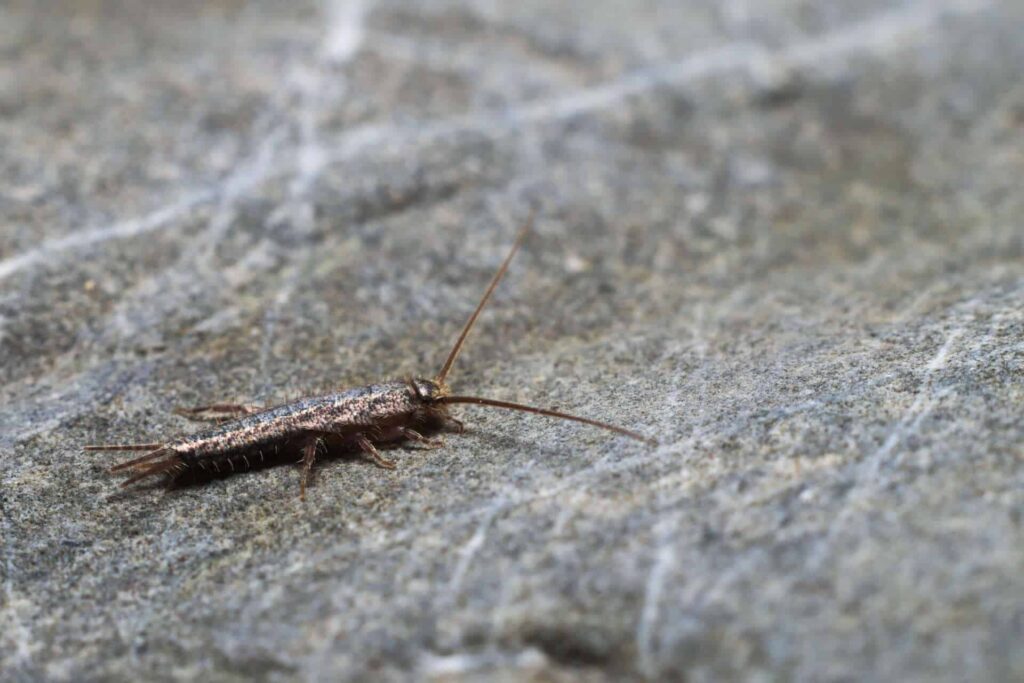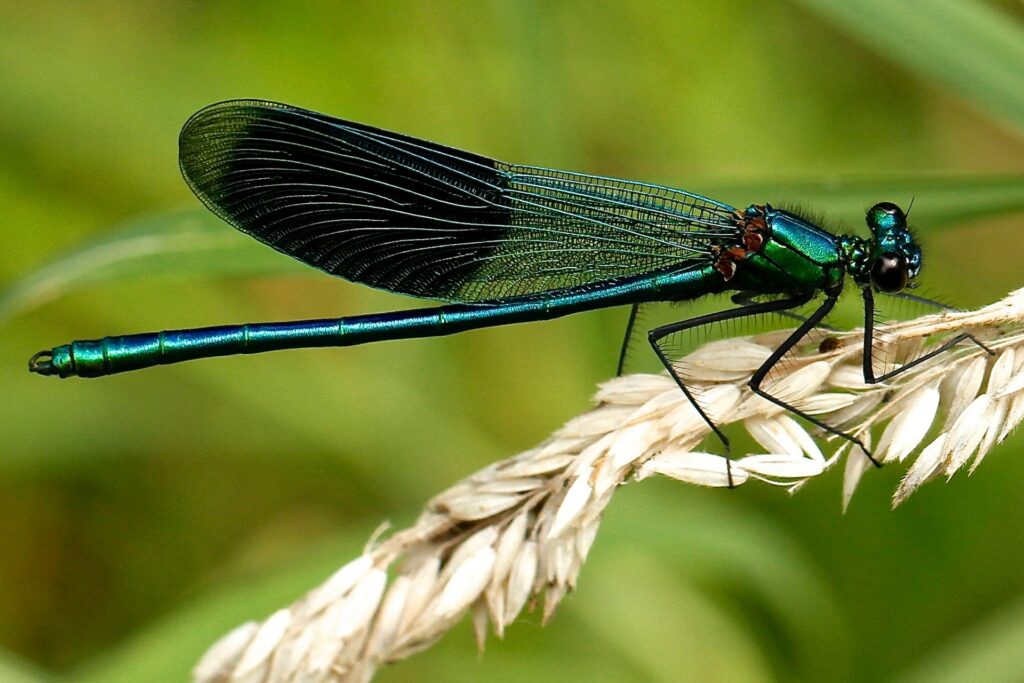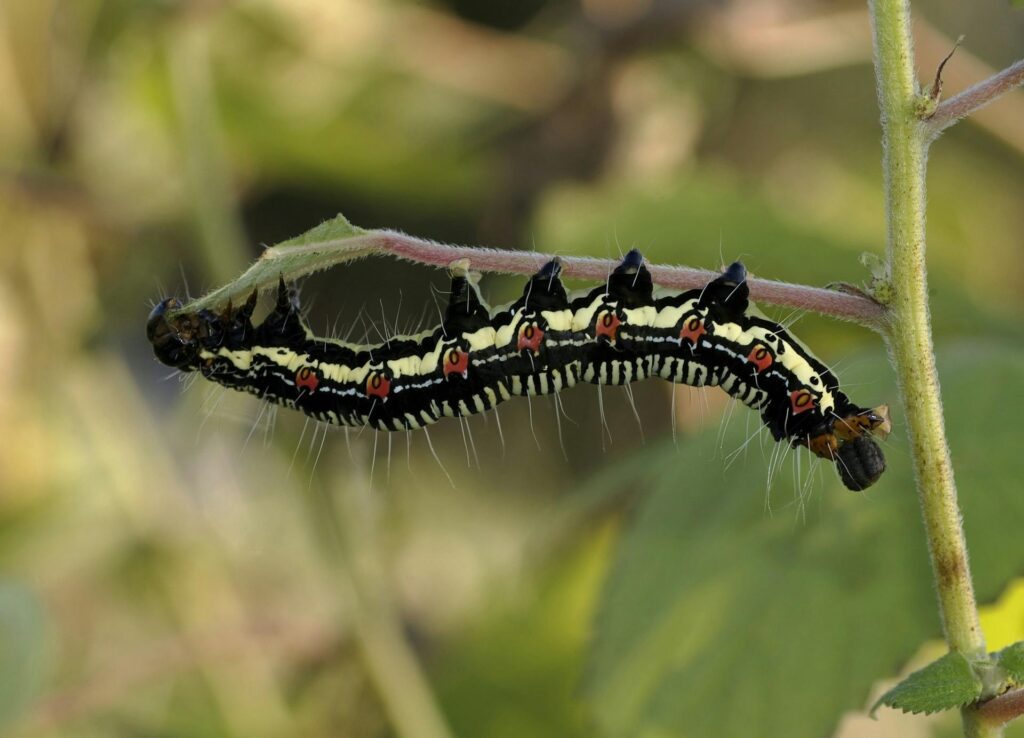If you’ve noticed small dark ants trailing along your sidewalk or driveway, you’re likely dealing with pavement ants. These persistent pests get their name from their habit of nesting under sidewalks, driveways, and building foundations, where they create small mounds of soil at entrance points. While they primarily live outdoors, they frequently make their way into homes in search of food, creating frustrating trails of tiny invaders.
What are pavement ants?
Pavement ants (Tetramorium caespitum) are one of the most common ant species found in the United States. These small ants establish colonies under sidewalks, driveways, and building foundations, where they create small mounds of soil at entrance points. While they naturally feed on insects and honeydew outdoors, they readily enter homes searching for sweets, proteins, and greasy foods.
They’re particularly known for their territorial behavior, often engaging in “ant wars” with neighboring colonies, fighting for territory on sidewalks and driveways. These battles between opposing colonies can involve thousands of worker ants and may continue for days. Despite their small size, pavement ants are remarkably resilient and adaptable urban pests.
What do pavement ants look like?
Pavement ants are small insects, typically measuring 1/8 to 1/16 inch in length. They’re dark brown to black in color, with lighter-colored legs and antennae. One of their most distinctive features is the pair of small spines on their back, though these may be difficult to see without magnification. Their heads and thorax have grooved parallel lines, and workers have a two-segmented club at the end of their antennae.
Queen pavement ants are slightly larger than workers, and winged reproductive ants may be twice the size of workers. Pavement ants have a stinger, though it’s rarely capable of penetrating human skin. When crushed, these ants emit a slight musty odor, which helps differentiate them from odorous house ants that release a distinct coconut or blue cheese smell when crushed.
Lifecycle of a pavement ant
Pavement ants develop through complete metamorphosis with four distinct life stages: egg, larva, pupa, and adult. The colony begins with a mated queen who establishes a new nest and lays her first batch of eggs. These eggs hatch into tiny, white, legless larvae, which are fed and cared for by the queen until they develop into worker ants.
As the colony grows, different castes develop, including workers, soldiers, and reproductive males and females. Workers, which are sterile females, maintain the nest, collect food, and care for the queen and young. Reproductive ants, which have wings, develop in mature colonies, typically in late spring and early summer.
When conditions are right, these winged ants embark on mating flights, after which males die and fertilized females shed their wings and establish new colonies. A mature colony can house thousands of workers with multiple queens, allowing the colony to spread and survive for many years.
The entire process from egg to adult typically takes 6-8 weeks, depending on environmental conditions. Unlike some ant species that relocate their colonies frequently, pavement ants tend to maintain established nests for long periods, gradually expanding their territory.
Are pavement ants dangerous?
Pavement ants pose minimal health risks to humans and pets. They don’t transmit diseases, and their primary impact is as a nuisance pest. While they can contaminate food they come into contact with, they generally don’t cause the more serious problems associated with some other ant species. However, their persistent presence and ability to establish large colonies can make them a frustrating household pest to deal with, particularly in the kitchen where they’re drawn to food sources.
Pavement ants do possess a stinger, but it’s usually too small to penetrate human skin, and their venom is generally not potent enough to cause significant reactions in most people. In rare cases, those with ant allergies might experience more pronounced reactions.
Unlike some destructive ant species, pavement ants don’t cause structural damage to buildings, though their nesting habits can sometimes displace small amounts of soil or sand between pavement cracks, potentially exacerbating existing structural issues over time.
Do pavement ants bite?
Pavement ants can bite, but they rarely do so unless severely provoked. Their mandibles are relatively weak, and their bites are generally not painful to humans. Unlike fire ants or harvester ants, pavement ants don’t inject venom when they bite. Some pavement ants have a small stinger, but it’s typically too weak to penetrate human skin.
Their defensive behavior is usually limited to releasing a mild formic acid, which can cause a slight burning sensation if it contacts sensitive skin. When disturbed, pavement ants are more likely to scatter and hide rather than attack, making painful encounters uncommon.
How do pavement ants spread?
Pavement ants spread through several methods, with colony budding being the most common. This occurs when a queen and a group of workers break off from an established colony to form a new nest nearby. Additionally, mature colonies produce winged reproductive ants (alates) that participate in mating flights, typically in late spring and early summer. After mating, newly fertilized queens establish new colonies, often within a few hundred feet of their original nest.
Human activity significantly contributes to pavement ant spread. They can be inadvertently transported in potted plants, building materials, or soil moved from infested areas. Construction activities that disturb existing colonies often result in ants relocating to nearby undisturbed areas.
Their preference for nesting under man-made structures makes them particularly successful in urban and suburban environments, where suitable nesting sites are abundant. Once established, colonies can gradually expand their territory, with workers foraging up to 30 feet from the nest.
When do pavement ants come out?
Pavement ants remain active year-round, but their activity patterns shift with the seasons. During warmer months, particularly late spring through early fall, they’re primarily active outdoors. You’ll notice increased activity during early mornings and evenings when temperatures are moderate. They often become more visible after rainfall, as they work to clear water from their nests and repair any damage.
In summer, pavement ants may forage throughout the day but typically avoid the intense midday heat. During winter months in colder regions, they move deeper into their nests or seek warmth inside buildings, where they can remain active despite outdoor temperatures.
Indoor infestations often become more noticeable during winter as ants seek food and shelter inside heated structures. Mating swarms of winged reproductive ants typically occur on warm days in late spring or early summer, often after rainfall.
How to know if you have a pavement ant infestation
Identifying a pavement ant infestation involves recognizing several key indicators around your property. Here are some fairly obvious signs that you might be dealing with an infestation:
- Visible ant trails: Small, dark ants moving between food sources and nest entrances, often following the same path consistently.
- Soil displacement: Small piles of displaced soil resembling tiny volcanoes along cracks in driveways, sidewalks, or your home’s foundation, indicating nest entrances where worker ants have excavated below the surface.
- Indoor activity: Ants found in kitchens and bathrooms near sources of moisture and food, particularly attracted to sweet and greasy foods around spills or pet food bowls
- Winged ants: Reproductive ants appearing inside your home during spring, especially near windows, indicating a mature colony nearby.
- Multiple trails: Ant trails throughout your property, particularly along structural lines like walls and baseboards, suggesting an established infestation.
- Daylight foraging: Unlike some other ant species, pavement ants forage in broad daylight, making their trails easier to spot.
- Persistent behavior: When disturbed, they scatter but quickly return to the same path once the disturbance passes, often within minutes.
How to prevent a pavement ant infestation
Preventing pavement ants requires a comprehensive approach focusing on exclusion and habitat modification. Here are some methods you can use in order to prevent pavement ants from entering your home:
- Seal entry points: Use caulk or appropriate sealants to close cracks and gaps in your home’s foundation, walls, and around utility entries.
- Eliminate food sources: Keep food in sealed containers, clean up spills promptly (especially sweet or greasy substances), wipe counters regularly, and keep floors free of crumbs.
- Create dry barriers: Ensure proper drainage around your home’s foundation and trim vegetation away from the structure.
- Remove nesting sites: Clear piles of stones, wood, or debris near your home that could serve as nesting locations.
- Install physical barriers: Consider creating a barrier of gravel or crushed stone around the perimeter of your foundation, which discourages nesting compared to soil.
- Address moisture issues: Fix leaking pipes and eliminate water sources that attract pavement ants.
- Regular inspection: Check your property for signs of ant activity, paying particular attention to cracks in concrete and areas where soil meets your foundation.
- Proactive treatment: Apply appropriate deterrents to vulnerable areas before ants establish colonies.
- Seasonal timing: Maintain these preventive measures year-round, but especially in early spring before ant activity increases, for the best protection against infestations.
How to get rid of a pavement ant infestation
Addressing a pavement ant infestation requires a comprehensive approach targeting both the ants you see and their hidden nests. Here are some DIY ways to handle an infestation:
- Eliminate food sources: Clean affected areas thoroughly, removing any food residue that might be drawing ants into your home.
- Use ant baits strategically: Place commercial ant baits along trails and near entry points, as foraging workers take the bait back to the nest, eventually killing the queen and colony (keep baits away from children and pets).
- Try natural deterrents: Apply vinegar solutions to disrupt ant trails and discourage them from entering certain areas.
- Treat outdoor colonies directly: Apply appropriate ant control products to visible nest entrances.
- Understand limitations: These methods often provide only temporary relief, as pavement ant colonies are frequently extensive and difficult to fully eliminate without professional help.
When You Should Call a Professional
For comprehensive control, professional pest control services offer the most effective solutions. These experts can identify the extent of the infestation and implement targeted treatment strategies that address both visible ants and their hidden nests. They have access to professional-grade products and the expertise to apply them safely and effectively.
Professional pest control technicians can also help identify underlying issues that might be contributing to the infestation and provide guidance on preventing future problems. Their comprehensive approach targets the entire colony, including queens, which is essential for long-term control. They can implement treatments that continue to work over time, preventing reinfestation after the initial ant control efforts.
If you’re dealing with persistent pavement ant problems, contacting a professional pest control service like Aptive is your best option for effective elimination. They can develop a customized treatment plan starting with a free quote to help you address your specific situation, providing lasting relief from these persistent pests.









